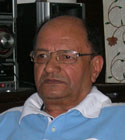THE DUSSEHRA FESTIVAL
September 28th, 2009 by | Posted in Life Comments Off on THE DUSSEHRA FESTIVALDussehra is also called ‘Vijaidashmi’ and ‘Dus Hara’ meaning cutting of ten heads. Dussehra is observed all over India as well as Nepal. This festival has a significance of celeberating victory of Shakti over mahishasura and also that of Lord Ram over Ravana. The festivities are observed by aplying ‘Tilak’ on the forehead, payers, observance of religious rituals like burning Ravana effigyand keeping fast for eight days.
It is a unique festival celebrated all over India for different reasons & with different ways of celebration. We all celebrate this festival to mark the victory of good over evil. This festival is mainly important to the Hindus and is celebrated for 10 days.
Vijayadashami is celebrated on the tenth day of the bright fortnight of the Hindu autumn month of September end or beginning of October and is the grand culmination of the 10-day annual Navaratri festival.
Vijaya Dashami also known as Navaratri,/Durga-utsav and is one of the very important & fascinating festivals of India, and celebrated with great fun and fanfare. It begins with people keeping fast on all the eight days, the ninth day called ‘Ram Navmi’is the day for prasad and the effigy of Ravanais burnt on the tenth day – Dussehra. During these fasting days ‘jyoti’ is lit in the pooja room for nine days uninterrupted in front of the picture of Goddess Durga. On the ninth day, five or nine small girls are invited – called ‘kanjaks’ and are prayed like a Goddess. Their feet are washed by the house-holder with water, vermillion is applied on their forehead. Thereafter they are given prasad, clothes and gifts plus token cash as per the wish of the householder. It is only after this ceremony that the family members are permitted to eat and break their eight days of fasting.
The effigy of Ravana is also burnt with a lot of fanfare. Thousands of people gather all round the effigies of Ravana, Meghnath and Kumbhkaran and just before sunset, Ram arrives there with his army, and kills Ravana with his arrow. The crackers do the rest and slowly the congregation disperses. It is a fair where people get lots of local made eateries too.
On the day of Dasha-Hara, the tenth day of the festival, statues of the Goddess Durga are submerged in the river waters. These statues are made with the clay & the pooja is performed with turmeric and saffron, which are disinfectants and get mixed in the river waters. This makes water useful for the farmers & yields better crops.
Chatrapati Shivaji Maharaj, the founder of the Hindu Swarajya – Maratha Empire, used to worship Lord Shiva & Goddess Durga in the form of goddess Bhawani before any military expedition. Goddess Bhavani had blessed Shivaji Maharaj with her own sword called “Bhavani Talwar” on this blessed day.
Huge machines and tools in factories are all decorated as Dasha-Hara is also treated as Vishwa-karma Divas – the National Labor Day of India. Vishwakarma divas normally falls on 17th Sept. each year.
Veda Vyasa is considered as the foremost Guru and Vijayadasami is also celebrated as Vyasa puja.
On the day of Dussehra, Ram, killed the great demon Ravan, who had abducted Ram’s wife Sita to his kingdom of Lanka. Ram, along with his brother Lakshman and devoted follower Hanuman, and an army of monkeys fought a great battle to rescue his wife Sita. The war against Ravan lasted for ten days. Sita was returned to her husband Ram and thereafter they returned to Ayodhya in triumph and glory.
It marks the end of the nine days of Navratri. Vijayadashami as Dussehra is also known, celebrates the homecoming of Lord Rama the hero of the epic Ramayana, after he rescued his wife Sita from Ravana. Ram Lila, the play is staged in various places in every township and is attended by scores of people everywhere
Dussehra is also reminiscent of the end of the exile and banishment of the Pandava princes in the epic Mahabharata and their return with their weapons to reclaim their kingdom.
Vijayadashami is also celebrated as the day of victory to rejoice about Durga’s triumph over the demons led by Mahishasura. It is essentially a festival in honor of Goddess Durga. The Divine Mother fought with him for nine nights, and killed him on the evening of the tenth day, known as the Vijaya Dasami.
Vijayadashami is also the day of the ‘Ma Saraswati’ or the deity of knowledge and learning.
Ravi Matah
Tags: Dashmi Pooja, Duss-Hara, Dussehra, Navratras, Ram Nauvmi, Vijai Dashmi



